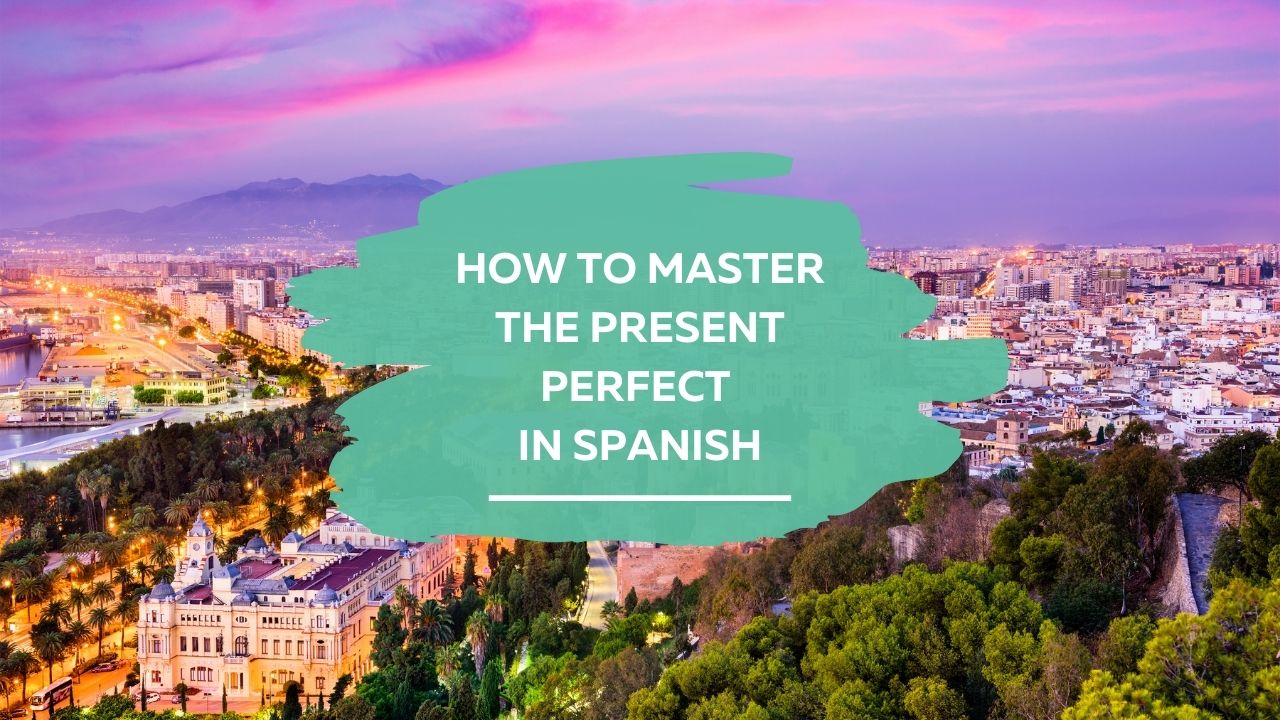


One of the best ways learn Spanish is to add more verb tenses, like the present perfect in Spanish, into your vocabulary.
Just like in English, you can use different tenses to show whether an action has happened in the present, distant past, recent past, or is ongoing.
Fortunately, many Spanish tenses are formed fairly similarly to their English equivalents, even if they are used slightly differently. Once you understand how to use them, you can add more precise time descriptions to your Spanish sentences.
In this post, I’ll focus on the present perfect tense, how to use it, and how you’ll hear it used in different parts of the Spanish-speaking world.
By the way, if you want to learn Spanish fast and have fun while doing it, my top recommendation is Spanish Uncovered which teaches you through StoryLearning®.
With Spanish Uncovered you’ll use my unique StoryLearning® method to learn Spanish naturally through story… not rules. It’s as fun as it is effective.
If you’re ready to get started, click here for a 7-day FREE trial.

First, let’s get clear on what the present perfect tense is and how it’s used in English. The confusing thing about the present perfect tense is that it’s used to talk about things that have happened in the past. So why is it called the present perfect?
That’s because the auxiliary verb we use to form this tense, “have”, stays in the present tense, but we use the past participle of the main verb that’s describing the action.
The simplest form of the present perfect tense looks like this:
When you form the present perfect tense in English, you always use the same auxiliary verb “have”, but conjugate it differently depending on who performed the action:
You can also swap out the verb done for other verbs in the past participle form:

Spanish uses a very similar format, which we’ll get to in a minute. But first, let’s make sure you understand the difference between the present perfect and other forms of the past tense.
Compare the following four sentences:
You aren’t going to learn all of these forms in Spanish today, but it’s important to notice the distinction between the present perfect and the past perfect.
You can see that the present perfect implies an action that has happened recently, whereas the past perfect implies an action that has been completed in the past.
They’re similar enough that if you swapped them out in a sentence, the listener could probably infer what you intended. But being able to use them properly provides more nuance to your sentences.
It’s more or less the same in Spanish. The tenses can be hard to tell apart at first, but you’ll get more comfortable with them over time.

So, now that we know how the present perfect tense works in English, how do we use it properly in Spanish?
Let’s take a look at how to form the simple phrase I have done:
Just as in English, we also need to conjugate the auxiliary verb (haber) to align with the subject of the sentence:
We can also swap out the verb hacer with the past participle of other verbs to form any number of sentences:
All you need to do to use the present perfect tense is to remember how to conjugate the verb haber and to learn the past participle of other verbs.
Keep in mind, though, that in Spanish, the present participle and the past participle can look deceptively similar because they both end in the letter o.
Compare these sentences, all of which refer to an action that happened in the past, but each of which implies a slightly different point in time:
Notice how the present perfect uses the past participle, but the past progressive uses the present participle!
Yes, it’s confusing, but you don’t really have to remember all of these grammatical terms. As you start to incorporate these tenses into your Spanish conversations, you’ll be able to use context clues to help you figure it out.
In fact, that’s what we’re going to get to next: when to use the present perfect tense in a sentence, and what phrases to look out for to help you identify the tense.

The next thing to keep in mind is that the present perfect tense can only be used to refer to actions that have happened and concluded recently, not in the distant past.
But what counts as recently? And how far in the past are we talking about?
Think of the phrase, Yo he comido (I have eaten). We could say, Yo he comido hoy (I have eaten today) but we wouldn’t say, Yo he comido ayer (I have eaten yesterday).
For that, we might use the simple past, Yo comí ayer (I ate yesterday) or Yo había comido ayer (I had eaten yesterday) depending on the context of the sentence.
On the other hand, it might be perfectly OK to say Yo he pagado las facturas este mes (I have paid the bills this month), even if it happened further in the past! The important thing is that it happened fairly recently in the context of what’s being discussed.
With that in mind, there are several phrases that call for the present perfect. If you hear a sentence that starts with these words, you can expect it to be in this tense:
Other words that signal the present perfect tense are recientemente (recently), nunca (never), and ya (already). When you think about it, the same words are often used with the present perfect tense in English too. For example:
Finally, phrases that refer to something you’ve done more than once in the past may call for the present perfect tense. For example:

Now, let’s look at a few situations in which you should avoid the present perfect tense in Spanish.
First, this tense isn’t normally used when referring to an action that happened at a specific date or time in the past.
For that, we’d use the simple past tense:
Also, you wouldn’t use it when referring to habitual or repeated actions, which calls for the imperfect past tense, and doesn’t have a direct equivalent in English:
As we’ve seen, the present perfect tense in Spanish has a lot in common with the same tense in English. However, it’s best to familiarize yourself with how it’s used in Spanish, rather than look for the English equivalent of each phrase.
One major difference is that you can’t split the verb phrase in Spanish, the way that you can in English.
For example, the phrase Yo ya he leído este libro translates word for word to “I already have read this book,” which sounds awkward in English. You’d be more likely to say “I have already read this book,” which isn’t possible in Spanish.

Finally, there are some differences in how the present perfect tense is used in different parts of the Spanish-speaking world. It won’t have a major impact on how well you can communicate, but it’s worth keeping in mind to avoid confusion.
The main difference is that European Spanish speakers often use the present perfect in places where Latin American Spanish speakers would use the simple past tense.
For example, a Latin American Spanish speaker might say:
While a European Spanish speaker might say:
In both cases, the meaning is the same, but the second sentence might sound awkward to speakers who aren’t familiar with that dialect.
Depending on your reasons for learning Spanish, it may be worth spending some time getting used to the way this tense is used in the regions you’ll be living in or visiting.
Keep in mind that this difference only applies to actions that have happened recently; both groups of speakers use the simple past to refer to actions that happened at a distant point in time.

The present perfect tense is a common tense that’s used in everyday speech, so if you want to get better at Spanish, there’s no way to avoid it. Fortunately, this is a fairly easy tense to learn that has many similarities to its English counterparts.
Best of all, it’s simple to conjugate and doesn’t require learning any new verb endings. You can use it with nearly any verb if you know its present participle.
Being able to describe actions that have happened in the recent past will add plenty of opportunities for nuance to your Spanish conversations!